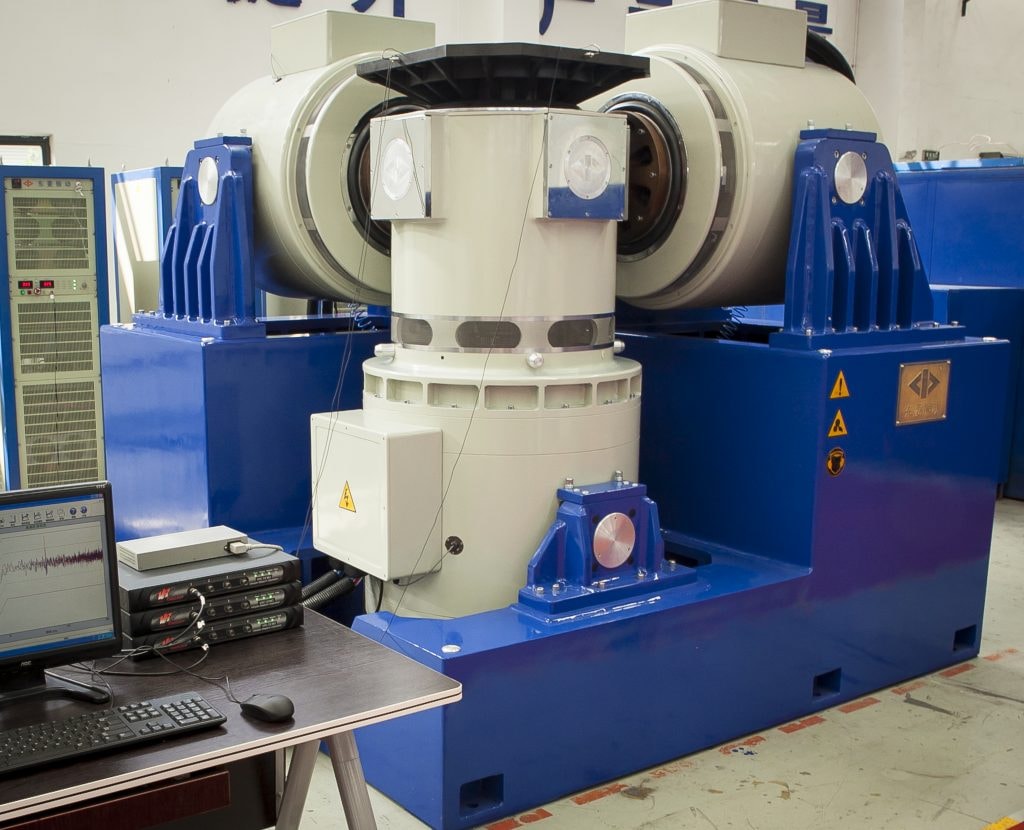3-Axis Vibration Test
Three-axis testing is accomplished by running a vibration test along three axes using identical or individualized test profiles. The VibrationVIEW software supports different profiles for random vibration tests, and the test systems are compatible with all servo-hydraulic and electrodynamic shakers.

VR Control Systems
A multi-loop test requires a VR10500 with multiple loops enabled. The primary VR10500 controller must drive all outputs, but the system can have stacked controllers for more than 16 inputs (up to 512).
The Sine, Random, Shock, and Field Data Replication (FDR) test modes can run 2, 3, or 4 output drive loops simultaneously, but they have different control capabilities on the VR10500.
OVERVIEW
 Random
Random
Run random tests with Gaussian amplitude distribution.
- 104,000 lines of control
- Supports over 9,999 breakpoints, suitable for virtually any test specification
- Each control loop can have a unique test profile and limits
- Includes independent, magnitude and phase, magnitude-only, and equal outputs control
- “Run For” schedule level can have an independent modifier
 Field Data Replication
Field Data Replication
Playback a recorded time-history file as a control reference; the output phase is synchronized.
 Sine
Sine
Run a single frequency sine tone at a defined amplitude and time.
- Each control loop must have the same test profile, but the user can adjust the phase angle between the two outputs (±360 degrees)
- Control how fast the phase control loop updates in Magnitude and phase control
- Limit how fast the phase between the output channels changes
- Includes magnitude and phase, magnitude-only, and equal outputs control
 Shock/SRS
Shock/SRS
Run an industry-standard pulse or a user-defined transient pulse; the output phase is synchronized.
GRAPHING
Graph settings include a control loop section, and the user can select which control loop demand, control, tolerance, and abort traces to plot. Any loop can be the reference for the transmissibility plot.
Faster & More Realistic
In most operational environments, vibration occurs in the x, y, and z directions. In many industries, engineers must run a test in the three axes simultaneously for a more realistic response. A device under test may pass a sequential, single-axis test but fail a multi-axis test of the same time duration.
Three-axis testing also eliminates the need to remount the device under test for each axis. For a single-axis test, the engineer runs the test profile along one axis at a time. With a triaxial shaker, they can test products along multiple axes at once.
Learn more about multi-axis vibration testing in our Multi-shaker Control VRU course.
VR10500 Controller

Vibration Research’s high channel count control hardware for vibration and shock testing. Scalable to 512 channels and compatible with any electrodynamic or servo-hydraulic shaker. Features include up to 256kHz sample rate and 4 outputs for multi-shaker testing.
Tripod Shakers
Define the geometry of a 3-axis translational-only tripod system in VibrationVIEW. The VR10500 outputs connect to the valve controller inputs, and you can enter tripod dimensions and limits as system limits.
- Requires (1) VR10500 controller (no GeoBox required)
- Supports linear or rotary actuator type
- Requires transient software plus IEEE test software
- Sine, Random, and FDR test types
Seismic Industry






